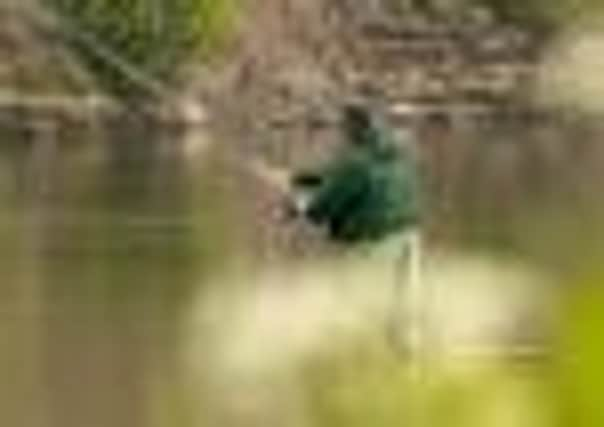Significant drop in salmon catches blamed on last year’s poor weather


Just over 14,500 salmon were caught on the local rivers last year, down from over 20,800 in 2011 and 31,321 in 2010, according to the River Tweed Commission’s annual report.
Reported catches of sea trout were also significantly down on previous years.
Advertisement
Hide AdAdvertisement
Hide AdIn the report Douglas Dobie, chairman of the River Tweed Commission, stated: “The salient feature of last season’s fishing was the weather, when all of us working in and enjoying the countryside had to endure and accept the consequences of an unprecedented wet spell.”
He added: “Whilst catches of fish were reduced from the higher levels of the previous two years, they were in line with lower catches of other east coast rivers.”
Despite the disappointing overall totals, Mr Dobie highlighted that spring salmon catches in 2012 were at the second highest level in 30 years.
The chairman also emphasised that it appeared that the lower catches did not reflect fewer fish in the Tweed system.
Advertisement
Hide AdAdvertisement
Hide Ad“The summer and autumn catches were more evenly spread over the second half of the season. At around 10,000 it says much for the tenacity of anglers and boatmen to have made the most of adverse weather conditions,” he said.
“In the few places where salmon did seem to stop and settle catches were exceptional, so I think it can be presumed there were again solid runs of fish into the system.”
He added: “At least the whole system was accessible for spawning, given the high water levels throughout the catchment.”
Mr Dobie revealed that last year the Tweed system had received 122 per cent of its average rainfall, which resulted in many days of lost fishing for both rods and in-river nets.
Advertisement
Hide AdAdvertisement
Hide AdHowever, better weather early in the season lead to high rod catches, with landings prior to July well above the five year average.
Rod catches of salmon peaked in October and sea trout in July, both a month later than in 2011.
On all three sections of the Tweed salmon catches were below the five-year average. The Till, Whiteadder and Ettrick all recorded higher than average catches, but the Teviot also had decreased rod catches.
The biggest salmon of the year was landed on the Bemersyde beat, at a mighty 43lbs. The next heaviest came in at 32lbs.
Advertisement
Hide AdAdvertisement
Hide AdAccording to the report, published on Monday, poaching continues to be an issue.
However, the number of illegal nets seized by the commission’s water bailiffs fell from 78 in 2011 to 49 last year.
Five reports of poaching were submitted to the magistrates in Berwick and one to the procurator fiscal north of the border.
Bailiffs and Lothian and Borders Police’s wildlife crime officer also conducted checks on local and Edinburgh fish dealers and also on the supply chain of salmon to hotels and restaurants.
Advertisement
Hide AdAdvertisement
Hide AdMr Dobie said: “The water bailiff team had an active year and, provided the wholesale price of wild salmon remains so high, poaching will remain a significant threat - particularly to valuable early spring stocks.
“With the support of additional night vision equipment and continued co-operation with the police, I am quite confident that the bailiff team will continue to be a very effective deterrent.”
The report also highlighted ongoing work to study skin conditions affecting salmon, following a large number of sightings of fish with such ailment at the end of 2011.
The commission initiated a partnership with other fishery boards and Marine Science Scotland to fund a three-year study at Stirling University.
It is hoped the work will uncover the initial cause of the conditions, and also any link to secondary infections, to enable more informed management decisions.